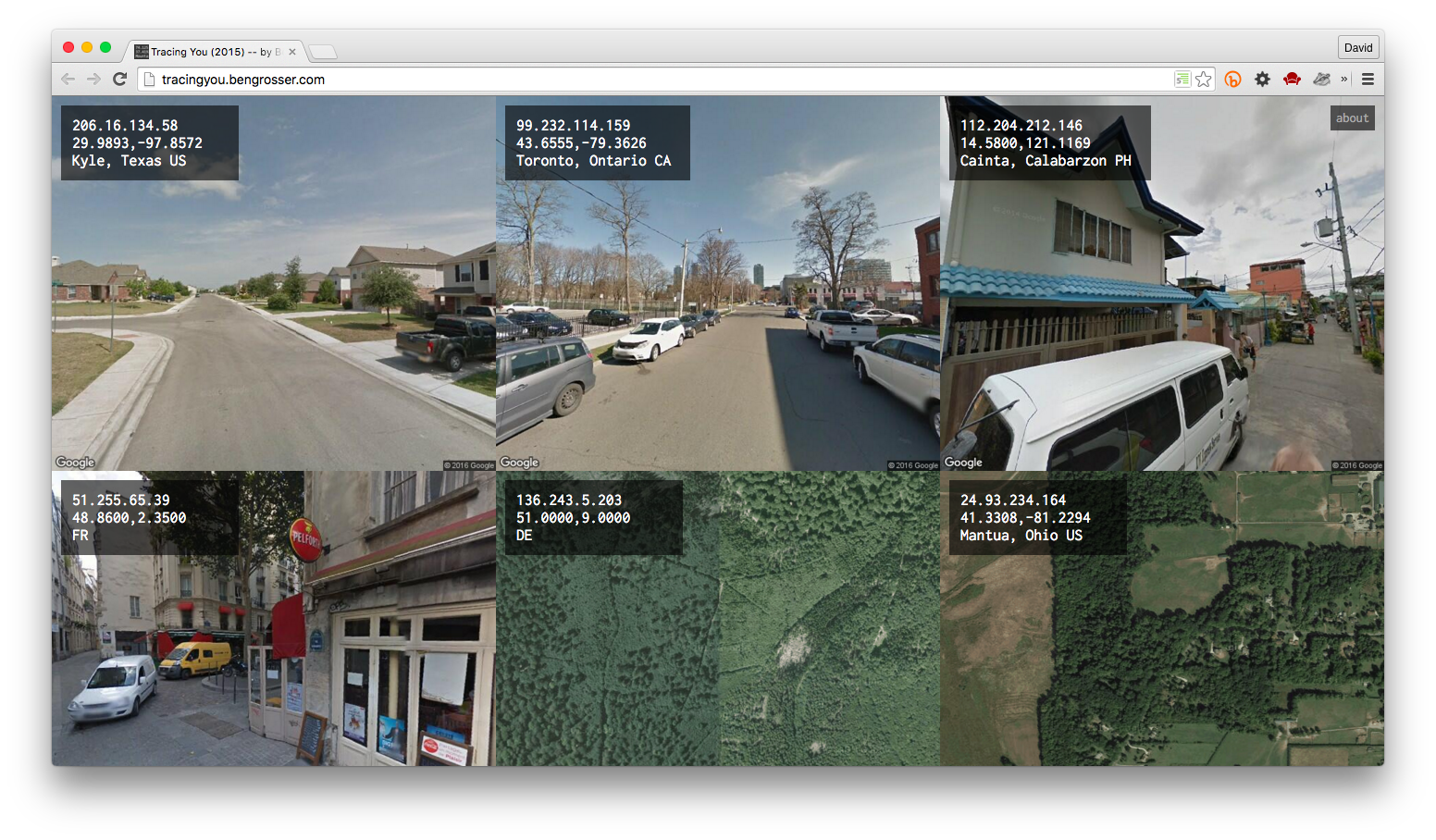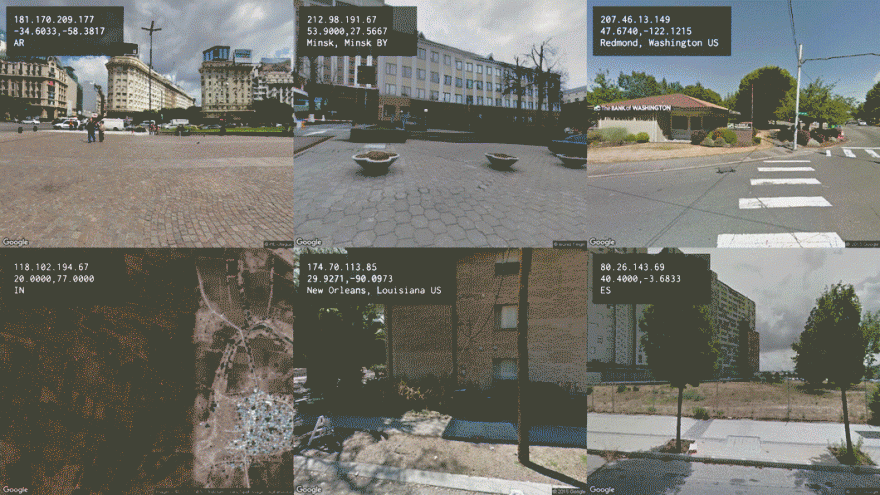The digital footprint is supposed to be an ominous concept. It’s supposed to be a reminder of all the digital breadcrumbs digital Hansels and Gretels leave in their wakes. But in practice, the digital footprint is too squishy a concept to truly resonate. How do you quantify all the little pieces of yourself given away with every click and pageview? They obviously add up, but in the moment they don’t feel like much. These pieces do feel meaningful to the companies on the other end of each transaction, however, and that asymmetry puts the individual web user at a disadvantage.
Artist Benjamin Grosser’s “Tracing You” is a brief reminder of the information contained in each click and every pageview. The website, which reproduces an interface that Grosser premiered at Paris’ Galerie Charlot, attempts to match visitors IP addresses with the nearest possible image. This is done by looking up the latitude and longitude associated with each IP address and then cross-referencing it with the nearest street view image.

The “Tracing You” homepage displays images and coordinates for the six most recent visitors. Results vary. In some cases, the image is an overhead view of a large tract. The result feels distant, at a remove from the viewer. (This is not strictly true: Insofar as there are few nearby properties, this may make it easier to pinpoint the visitor, but it doesn’t feel that way.) In other cases, however, the result feels close to home. Google’s camera is positioned in front of a home or a shop. Cars are parked out front. People can be seen walking about. It feels invasive, and it sort of is; that is the very point.
“Tracing You” displayed an image a few blocks from my home—a four minute walk when caffeinated. You can’t see it in the image, but the camera car must have been driving past the church. The shot looks down a side street—there are cars on both sides; must have been a wedding that day—towards the car dealership in the building that’s much too large for its current occupant. You can’t see my front door in the image, but it gives you a closer sense of where I live than any of the information on my public-facing profiles. It feels close to home because that’s what it is.

Discussions of online abuse often run into the wall that is the “Internet is not real life”-claim. Words online don’t mean anything, apparently. Nor do threats. “Tracing You” is mainly about tracking and surveillance of a corporate or governmental varieties, but it’s also a useful insight into the ways anyone can glean this sort of information. Online and offline easily blur. A click becomes some coordinates, which quickly become an image of a front door. Where does one go from there?
